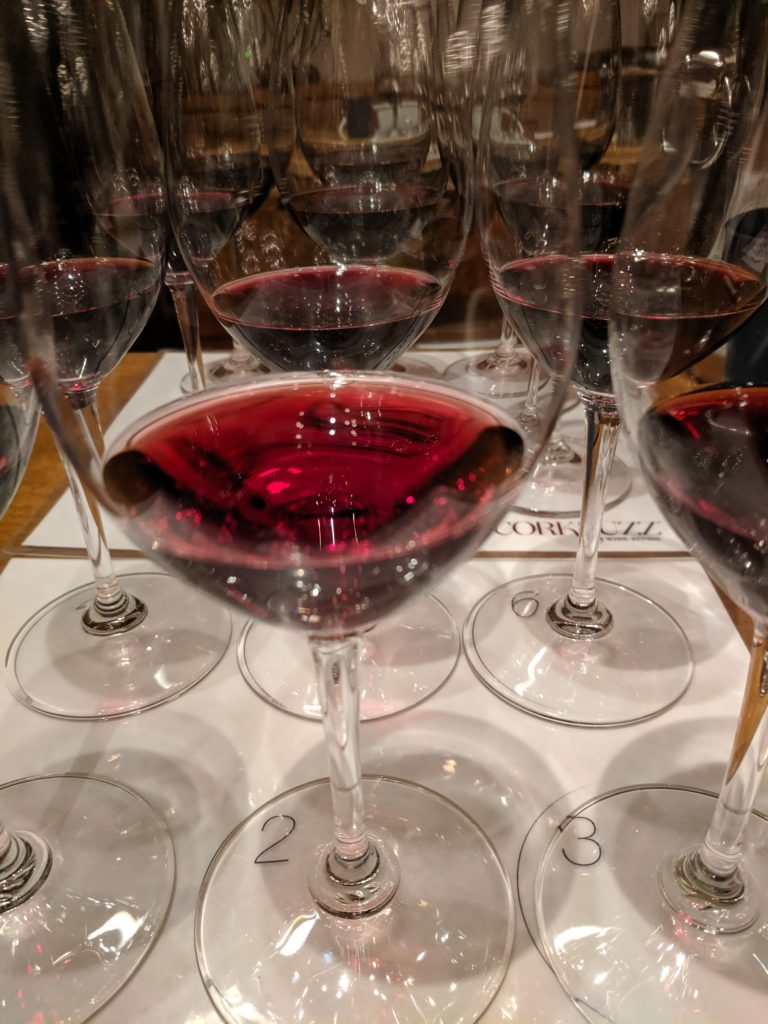
As we mark the Fourth of July this year, celebrations abound from barbecues and pool parties to fireworks that proudly proclaim our freedom. In this celebratory spirit, we can look to the Zinfandel grape as the quintessential grape variety with which to fill our glasses and raise a toast this holiday.
Descended from a Croatian grape, Zinfandel first arrived on America’s shores in 1829, eventually making its way to California by 1852 and becoming the most popular variety by 1878 during the state’s first wine boom. [For the full history, see the Zinfandel Advocates and Producers’ website.] Accordingly, Zinfandel holds dual personae. As David Amadia, president of Ridge Vineyards recently noted, it is considered to be California’s native grape, but given its European heritage, it is actually an immigrant story and an illustration of the American Dream. Surviving both phylloxera and Prohibition, Zinfandel continues to be widely grown and known throughout California.
While for some, Zinfandel is an also-ran variety, to many, it is under-appreciated high performer that deserves more recognition than it gets. In this regard, Master Sommelier, Laura Maniac Fiorvanti, proprietor of Corkbuzz Wine Studio, recently moderated a panel of Zin producers, which provided a perfect opportunity to showcase the caliber of these wines and their diversity. She kicked off the discussion wearing her heart on her sleeve, admitting that Zinfandel is her favorite grape due to its versatility. In particular, Fiorvanti spoke about the food friendly nature of Zinfandel to pair with braises, tomato-based dishes and stews, thanks to its sweet and sour tastes and elegance.
Despite her fervor, Amadia acknowledged that Zinfandel is a prince, not a king, among wines, in terms of its international reputation, but underscored the beauty of this grape to deliver delicious, age-worthy wines. He added that the trick to producing such high quality wines is determining where it performs the best. Previously at Ridge, they used to make Zinfandel wine from 100 different sites, but the winery has now whittled it down to the best vineyards, with an emphasis on old vines.
Highlighting the flexibility mentioned by Fiorvanti, Berryessa Gap Vineyards’ winemaker, Nicole Salengo, discussed the elegant and restrained side of Zinfandel. Given her pursuit of lively acidity levels, her Zinfandel grapes are the first to be harvested and she is not adverse to including under-ripe grapes in the fermentation, but she does remove the raisined ones. Her two vintages (2016 and 2017) of Zins from The Coble Ranch displayed light body, light color and bright acidity, resulting in an almost Pinot Noir-style wine.
As with Pinot Noir, Zinfandel varies widely based on the site it is grown on. Moreover, Zinfandel changes as you get closer to (or further from) the ocean. In this way, it speaks to the terroir with varying notes of spice, earthiness and acidity. In general, it is a grape (and ultimately a wine) with moderate tannins, that provides a smooth, seamless texture for the fruit and spice to show through. However, it was admitted that the grape is notorious for creeping up in sugar during the fermentation process, if alcohol levels aren’t carefully managed.
Hailing from two, old vineyards only two miles apart, Ridge’s contribution to the tasting offered up fuller-bodied wines, with darker fruit. These pre-prohibition vineyards (Geyserville from 1885 and Lytton Springs from 1901 and 1910) displayed two distinct wines; the former was more herbaceous with notes of cherry, while the latter showed spice, earth and blackberry. Amadia attributes their unique characteristics to the different soil types within each vineyard. Additionally, these vineyards also include Petit Sirah, Carignan and up to 18 other varieties planted alongside the Zinfandel vines, which he believes is the key to the quality of these resulting, magical wines.
Similarly, Kim Stare Wallace, president and owner of Dry Creek Vineyard, reiterated the need for balance in these wines as well as the need to preserve old vine Zinfandel. To this end, they have implemented a Heritage Clone Propagation technique, permitting the winery to continue to grow older clones of the grape in newer vineyards. Their Beeson Ranch Vineyard was planted in the 1890s. Her Wallace Ranch and Beeson Ranch Zinfandels were dense, rich and well structured, yet still elegant and refined.
Closing out the conversation, it was mentioned that, as a mid-season ripener, Zinfandel is less impacted by vintage variation. Rather, as Aaron Piotter, winemaker for Gallo Wines, explained, stylistically, it often depends on when you pick within a given growing season. Gallo’s two entries were the Louis Martini Gnarly Old Vines Monte Rosso 2016 from Sonoma and the recently launched Bear Flag Sonoma County Vineyard 2016. The Monte Rosso, grown on high elevation, volcanic red soil, was quite floral on the nose, with power, concentration and velvet texture on the palate and flavors of blueberry, spice, fig and date. Meanwhile, the Bear Flag was less stylized, but no less rich, with generous fruit, berries, oak, cocoa and good tannins.
By the end of the tasting and discussion, it was evident that Zinfandel delivers a wonderful range of styles, providing a wealth of options for any wine lover. Further, as “America’s Heritage Grape,” it is important to preserve this important viticultural legacy for the future.
[NB: Participants also had the opportunity to taste wines from Seghesio Family Vineyards, Leonard Wine Company, Peachy Canyon Winery and Cline Cellars.]
